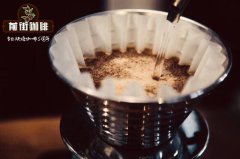Which is better for coffee beans to be insolated or washed? the taste of coffee beans is different from that of water washing.

Professional coffee knowledge exchange more coffee bean information please follow the coffee workshop (Wechat official account cafe_style)
Introduction of Qianjie-Solar and Water washing treatment
Traditional sun processing: this is one of the basic methods for the treatment of coffee fruit, which is also called natural drying or non-washing. Especially in Africa and other producing areas where water resources are not rich, almost all of them use tanning. Directly dry the coffee fruit until the whole is dry, and then remove the peel and pulp to get the coffee beans. In the past, coffee farmers used to dry in the open space in their own yard, which was relatively rough and slightly careless, and coffee would be infected with miscellaneous smell, but with the improvement of coffee production technology, people in some producing areas began to use off-the-ground drying, which greatly reversed the image of sun-tanned coffee.
Sun-treated coffee is mellow and sweeter. Usually, when the coffee fruit is dried, it is put into a grinder to remove the skin and pulp, and the raw coffee beans with silver skin are directly obtained and sent to the processing plant for further grading and selection.
Washing treatment-1 washing and separating coffee beans: the picked fresh coffee fruit is washed in a pool to separate the ripe fruit from the leaves, sundries, immature and overripe fruits floating on the surface.
Washing method-2 remove the peel and pulp: the washed fresh coffee fruit is put into the peeling machine to remove the peel.
Washing method-3 fermentation: because the peeled coffee beans are also covered with a layer of insoluble mucous membrane (also known as "pectin") in water, these coffee beans are piled up for the fermentation process, which quickly decomposes the mucous membranes. make it easy to wash off by water. Wet fermentation can be carried out by immersing coffee beans in the fermentation tank, or dry fermentation can be carried out without soaking. The fermentation time depends on the fermentation temperature, the variety of coffee, the quantity of coffee and the maturity of the fruit. In most areas, fermentation takes an average of 36 hours.
Washing method-4 washing shell beans: once the fermentation is finished, the washing water must be flowing water, the healthy mature coffee beans will stay at the bottom of the pool, and the defective coffee beans will float on the surface. after the washing process, the coffee endocarp (also known as parchment) still exists.
Washing method-5 drying: washed shell beans need to be dried, usually dried in the open air, and coffee beans need to be turned constantly to prevent unnecessary fermentation. But also can not dry too fast, step by step to dry, otherwise, it will lead to coffee beans rupture and loss of aromatic substances.
Knowledge: coffee beans are the fruits of coffee trees, which belong to perennial evergreen shrubs or small trees of Rubiaceae.
In short: Qianjie is a coffee research hall, happy to share the knowledge about coffee with you, we share unreservedly just to make more friends fall in love with coffee, and there will be three low-discount coffee activities every month. The reason is that Qianjie wants to make more friends drink the best coffee at the lowest price, which has been Qianjie's tenet for 6 years!
END
Important Notice :
前街咖啡 FrontStreet Coffee has moved to new addredd:
FrontStreet Coffee Address: 315,Donghua East Road,GuangZhou
Tel:020 38364473
- Prev

Washing Kenyan flavor, please climb another high-rise building how to drink Kenyan water-washed coffee step by step
Professional coffee knowledge exchange more coffee bean information please pay attention to coffee workshop (Wechat official account cafe_style) front street-Kenya double washing introduction Kenyan coffee beans basically use water washing treatment, generally speaking, after this treatment of coffee flavor is the purest, the least miscellaneous taste, fruity and fruity taste is also the best. What is even more commendable is that Kenya has special features.
- Next

What is the difference in the taste of sun-washed coffee beans? there is a big contrast between sun-washed and washed coffee beans.
Professional coffee knowledge exchange more coffee bean information please follow the coffee workshop (Wechat official account cafe_style) in front of the street-sun, washing treatment introduction water washing (wet method) washing: good gloss, mixed with less foreign body, slightly better sour taste, Colombia, Mexico, Guatemala use this method. Disadvantages: poor handling of time will produce a bad smell and special sour smell to be picked.
Related
- Beginners will see the "Coffee pull flower" guide!
- What is the difference between ice blog purified milk and ordinary milk coffee?
- Why is the Philippines the largest producer of crops in Liberia?
- For coffee extraction, should the fine powder be retained?
- How does extracted espresso fill pressed powder? How much strength does it take to press the powder?
- How to make jasmine cold extract coffee? Is the jasmine + latte good?
- Will this little toy really make the coffee taste better? How does Lily Drip affect coffee extraction?
- Will the action of slapping the filter cup also affect coffee extraction?
- What's the difference between powder-to-water ratio and powder-to-liquid ratio?
- What is the Ethiopian local species? What does it have to do with Heirloom native species?

